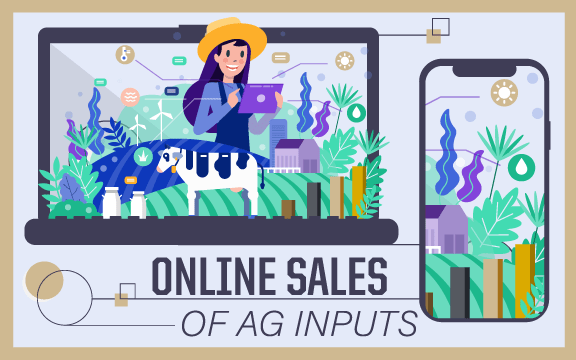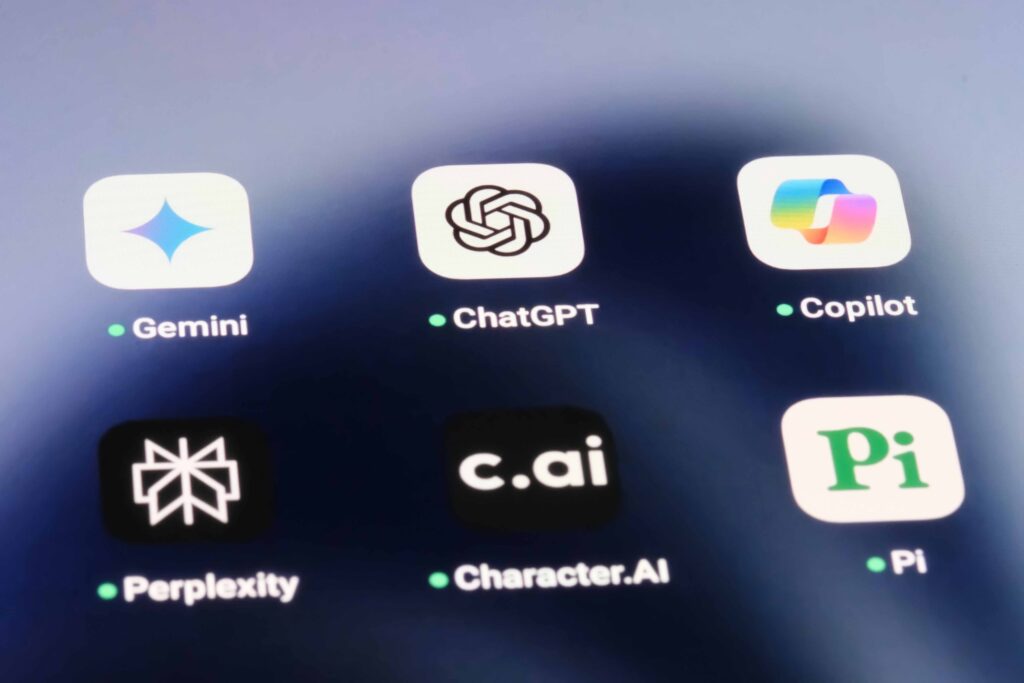 Authors: Dr. Luciano Thome e Castro, International Adjunct Professor
Authors: Dr. Luciano Thome e Castro, International Adjunct Professor
Dr. Scott Downey, Director and Professor
Dr. Michael Boehlje, Distinguished Professor Emeritus
The possibility of having a sizable online channel for selling or buying ag inputs has been under discussion for quite some time. After great expectations, some attempts, overpromises and maybe some frustration, this channel format slowly started to take shape. Interestingly, it is gaining a complexity in itself such as e-commerce in other industries. In certain ways, it is now impossible to talk about just one ag input online channel format anymore.
Thus far, we have at least three possibilities: (1) the retailer-farmer online-only marketplace (no physical presence); (2) the manufacture-farmer direct online sales; and (3) the retailer-farmer omni-channel experience (both online and physical presences). While it is important to note that there are hybrids of these models, we will be focusing on the main three listed above for the sake of this analysis.
Each of the three models have their own value proposition to participants, peculiarities and challenges for growth. We compare these models with retailers who only offer physical presences and speculate advantages and disadvantages of these possibilities in the eyes of the farmer as they are the final judge in this channel format competition.
Details of each model are provided below using examples of companies in the two biggest ag input markets, the United States and Brazil. During a time where “digital” is in the spotlight, it is worth understanding these options to decide which direction(s) your firm should be heading.
Characteristics and Challenges for Different Ag Input Channel Formats
In the first model, which we will refer to as Format 1, there is a proliferation of marketplace options today where dealers can sell and farmer customers can buy online. Independent online companies offer a meeting point for farmers to place their orders, which then go to one of the participating retailers following an established criterion. Examples of this model can be seen in the U.S. platforms of AgVend, Agrellus and CommoditAg to name a few. Brazilian examples include Orbia and a recent entrant, Magalu. The challenges here are initially attracting dealers to offer their products online, in addition to setting prices, margins and commissions that make sense and attract all parties involved — the dealers, the online platform, and mainly farmer customers.
The second model, Format 2, is the channel in which ag input manufacturers sell directly to farmers, paying a commission if they use an online platform. This model was pioneered by Farmers Business Network in the U.S. with similar models existing in Brazil such as InstaAgro. These direct sales platforms face the challenge of selling a more robust portfolio of branded products as not all crop protection, seed or fertilizer manufacturers are willing to go directly to farmers.
Many major players have had concerns about conflict with established retailers that have power with farmers in the marketplace. Another challenge for manufacturers lies in the inability to effectively and efficiently provide services typically offered by brick and mortar retailers such as delivering, financing and bartering in Brazil or custom application in the U.S.
Format 3 is the omni-channel alternative where brick and mortar dealers like Nutrien in the U.S. offer an online channel option that is integrated into its existing sales structure. Other dealers in the U.S. and Brazil like Lavoro and Coopercitrus seem to be heading toward this same sales strategy. The challenge here is managing potential conflicts between salespeople in different channels who work with the same customers to integrate the farmer customer experience into a single and smooth experience as opposed to an afterthought add-on.
Finally, there will always be the traditional brick and mortar only ag retailer without an online offering. Relationships remain important, and the movement of inputs requires heavy lifting by people close to the farmer in the “last mile”. It is worth comparing these different channel format options.
How Should We Compare Different Online Channel Formats and Brick and Mortar Retailers?
There are five questions that help us to better understand a traditional market channel’s service offerings, enabling us to compare the different channel formats from the farmer customer viewpoint.
- Does the channel do bulk breaking to match the lot size required by farmer customers?
Bulk breaking is less of an issue on large farms, but still important for many of the products handled by traditional retailers. This coordination may be challenging for online-only sites (Format 2), but it is an obstacle that can be overcome. Marketplace and omni-channel models (Formats 1 and 3) should not have an issue here as this function is already part of the model. - Does the channel reduce the average time customers of that channel wait to receive goods?
As discussed above, it may be more difficult for manufacturers selling online using specialized logistics providers (Format 2), but in places like the Brazilian market, there are great logistical challenges. Marketplace and omni-channel models (Formats 1 and 3) should not have an issue here. - Does the channel make it easier for customers to purchase the product?
There is probably a parity across the three models here with maybe a slight edge for manufacturers selling through online-only websites (Format 2) where they could price or package without the complexity of program adjustments to the offer. However, for customers who want to choose products from multiple brands, retailers and omni-channels (Formats 1 and 3) should have the leading edge. That said, if coordination and communication between omni-channel options are not good, the convenience factor can be a real problem. - Does this channel bring a better assortment?
There is a clear edge here for the first two online formats — the marketplace and the online-only platforms — as long as they are able to create efficient relationships with multiple retailers and/or manufacturers. The omni-channel and brick and mortar retailers will have their assortment as traditionally offered. - Does the channel provide extra services needed (delivery, training, application, returns, credit)?
Omni-channel sellers (Format 3) like Nutrien or Lavoro are used to providing these types of services. Online-only sellers (Format 1) could provide these services as part of their model. Manufacturers selling online (Format 2) could arguably provide these extra services if they could find efficient technologies to perform them as well as or better than the other channels; however, the investment and time required to do this, along with the speed of change in technologies that would make these things happen make this nearly impossible right now.
Based on this analysis, it seems the omni-channel model would have an edge as long as the price premium between omni-channel and the other two options does not become too wide. A buyer only wanting a single product may find a cheaper price through Formats 1 and 2, but if they need any service or assortment, they would face additional complexity (and perhaps expense) in purchasing them separately. In the end, the question is whether it will be cheaper for the farmer to buy products and services separately (Formats 1 and 2) or together (Format 3). When manufacturers and online-only retailers separate the pricing of products from services, it will be obvious how much omni-channel retailers are costing farmers for service. This means, as usual, it will be up to omni-channel sellers to be efficient, stay relevant and continue to work at demonstrating the value they deliver in exchange for this margin. Additionally, different farmer segments evaluate the pros and cons of channel formats. It will be interesting to see if the size of a segment that chooses to buy more from one format over the others will be large enough to justify the existence of that channel with one or more relevant players.
The Future
There may be a portion of buyers who choose to purchase from traditional brick and mortar retailers until they see enough people benefiting from the ease and convenience of online purchasing. It is likely that many omni-channel players are developing this model in order to prepare for this bandwagon moment or tipping point. Omni-channel sellers have an opportunity to create and learn right now before omni-channel offerings are considered a preferred option by customers. However, if customers do not feel comfortable buying online, the cost of developing omni-channel systems may not generate adequate returns in the short run. Marketplaces (Format 2) and manufacturers selling online (Format 3) can unbundle products and services, offering different combinations until the right configuration that is attractive to the correct segment size is identified.
Despite the specific challenges noted for each model, the biggest is turning the online alternative into something farmers are willing to experience in a way that motivates them to repeatedly buy online. For example, many people shop on Amazon because they believe the shopping experience is good, it is easy to find and compare alternatives, products are delivered quickly and if anything goes wrong, there are numerous ways to rectify the issue such as returning the product or receiving a credit for a future purchase.
Aside from Amazon and its dramatic expansion from books to almost everything else including some brick and mortar retailing with the acquisition of Whole Foods, what else can be learned from changes in the distribution channel in other industries? What about the significant expansion of e-commerce activity by Walmart, Target and Best Buy even before the pandemic caused a burst in internet sales? Online and digitally-driven marketing and sales activity has expanded dramatically in recent months in almost all geographies and industries. McKinsey and others have written extensively on how digitization and the digital strategy of many companies is transforming the traditional brick and mortar structure of the distribution channel, not only in business-to-consumer markets, but in business-to-business markets as well.
It appears the market is still waiting to see if farmers will be willing to shop online because they view it as a better experience than the traditional model, at least on occasion or for certain products. How online platforms integrate digital agronomic tools into the farmer customer digital experience will be another factor to consider. As examples, Nutrien integrates Agrible into the package offered to farmers, and Farmers Business Network promises data analytics.
Industry experts and market research from many different regions project growth in ag input digital sales. These projections are based on the belief that adoption will be motivated by consolidation of farms, professionalization of farmer decision making, generational change, digitization, and mainly the belief that technology sophistication will diminish the obstacles mentioned above to accelerate the growth of online purchasing.




